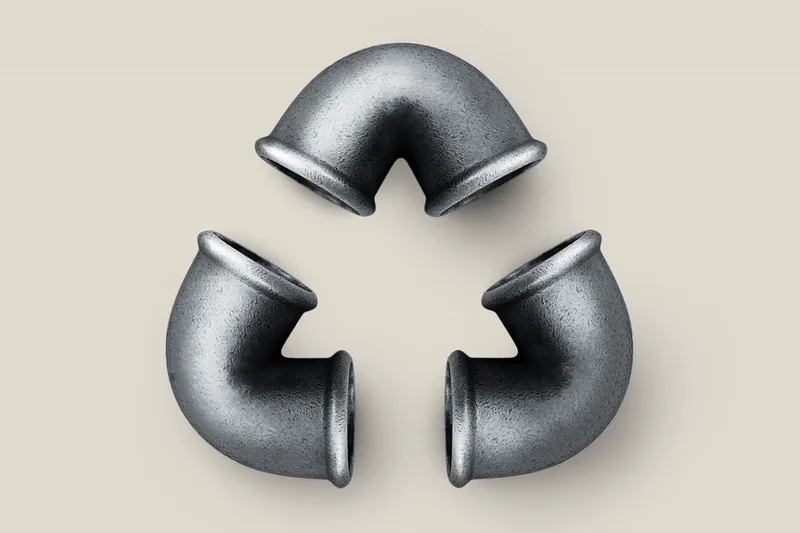A CFO’s guide for getting a trade-in program up and running
A well-designed pilot program is your friend when it comes to trade-in programs.

Francis Scialabba
• 5 min read
Let’s go back in time, shall we? And we mean back back, like barter system-level back in time.
While trade-in programs, where customers return or recycle old products, proliferate in the modern era, they’ve been around for ages, which makes designing an ideal blueprint a fairly easy recipe—so long as you keep present-day considerations top of mind.
“The trade-in is as old as capitalism,” Scot Case, VP of corporate social responsibility and sustainability at the National Retail Federation, told CFO Brew. “If you look at the history of organizations like Goodwill or Salvation Army, they’ve always been playing in these spaces.”
The difference, in 2024: “What’s beginning to happen is that retailers and brands are seeing the inherent value and actively participating in those markets both to protect and enhance their own brand image and to meet the needs of shifting consumer needs,” Case added.
Tom Goldsby, co-executive director of the Global Supply Chain Institute at the University of Tennessee Knoxville, also emphasized the growing consumer appeal of trade-in programs.
“There’s marketability. There’s brand association,” he told CFO Brew. “It’s a situation where the business model is more [of a] top-line than a bottom-line proposition.”
The CFO angle. And that’s why the complicated calculus of trade-in programs may increasingly land on a CFO’s desk.
“Consumers get to decide what the value is for them,” Case explained. “There’s some interesting math that consumers are doing. So, it is my contention that consumers are the ultimate CFOs when it comes to the resale markets.”
But wait, wait, wait. Actual CFOs have a role to play here. “More and more CFOs are beginning to look at the benefits of a resale program as part of their carbon reduction strategy,” Case added. “If you’re selling a used item, that means you’ve eliminated the carbon footprint of making new. That’s music to a CFOs’ ears: You’ve cut the manufacturing cost and you’ve sold the same product twice.”
There’s an easy CFO pitch for considering a trade-in program, Tony Sciarrotta, executive director and publisher of the Reverse Logistics Association, told CFO Brew: “From a CFO’s perspective, this can be a moneymaker and a customer loyalty builder. Those are the reasons you should consider it, as well as the sustainability factor: You can improve your ESG scores. That’s a three-legged stool.”
If you’ve read our past coverage of trade-in programs, you know that the most crucial financial decisions occur before you’ve even launched one. But let’s say you have a solid grasp on your consumer base, and now’s the time. You’ll want to run a pilot, Goldsby explained, and luckily it’s already been done many, many times.
News built for finance pros
CFO Brew helps finance pros navigate their roles with insights into risk management, compliance, and strategy through our newsletter, virtual events, and digital guides.
A perfect pilot. First, a warning. “Piloting something like this is kind of tough,” Goldsby cautioned, but it’s a crucial part of making the math work for you, since it gives key insight into what’s driving interest in the program.
One option is testing on a geographic or regional basis, he explained, noting it’s a good way to get a “glimpse of what the program could look like on a larger scale.” Another option: “If you have a multitude of brands, that’s another way you can break it up,” he continued. That could mean finding your holy grail product: Goldsby cites a sporting goods company he worked with that discovered fishing rods, of all things, made for a surprisingly lucrative trade-in pilot.
A solid pilot program is really about working through “the simple nuts and bolts of your product, and what would be practical for consumers to recycle,” Anthony Dukes, professor of marketing at the University of Southern California’s Marshall School of Business, told CFO Brew.
Since the proliferation of trade-in programs right now is based in large part on consumer demand, Dukes noted an added benefit hiding under the nose of any pilot program: There’s ample opportunity to determine why consumers are interested in the trade-in program in the first place. Maybe you include a questionnaire, asking why they’re trading in, Dukes suggested. These kinds of questions “will give the retailer a sense of the benefits that the consumers are getting,” he explained, which, in turn, will allow you to fine-tune the program once launched.
And if a successful pilot program means analyzing your customers and the durability and resonance of your products, well, that’s something CFOs should do anyway.
“One thing CFOs also need to keep in mind: They need to be brutally honest with themselves about the long-term value of the products they’re selling. If you are not selling high-quality products, there’s not going to be a significant secondary market for you, and secondary markets come with their own unique costs,” Case added. “If you’re not starting with a high-quality product, those touch points mean there might not be any value left at the end.”
News built for finance pros
CFO Brew helps finance pros navigate their roles with insights into risk management, compliance, and strategy through our newsletter, virtual events, and digital guides.